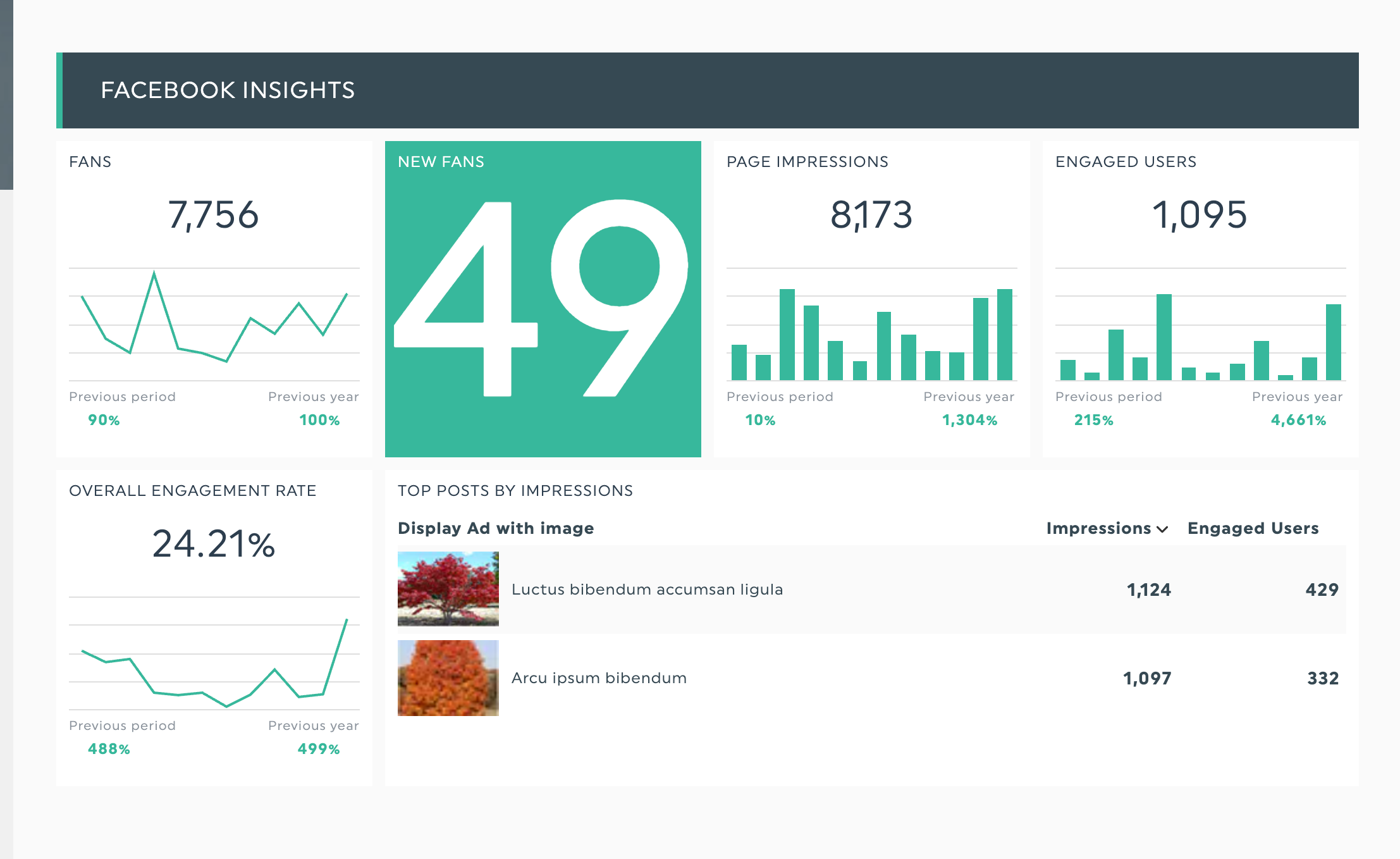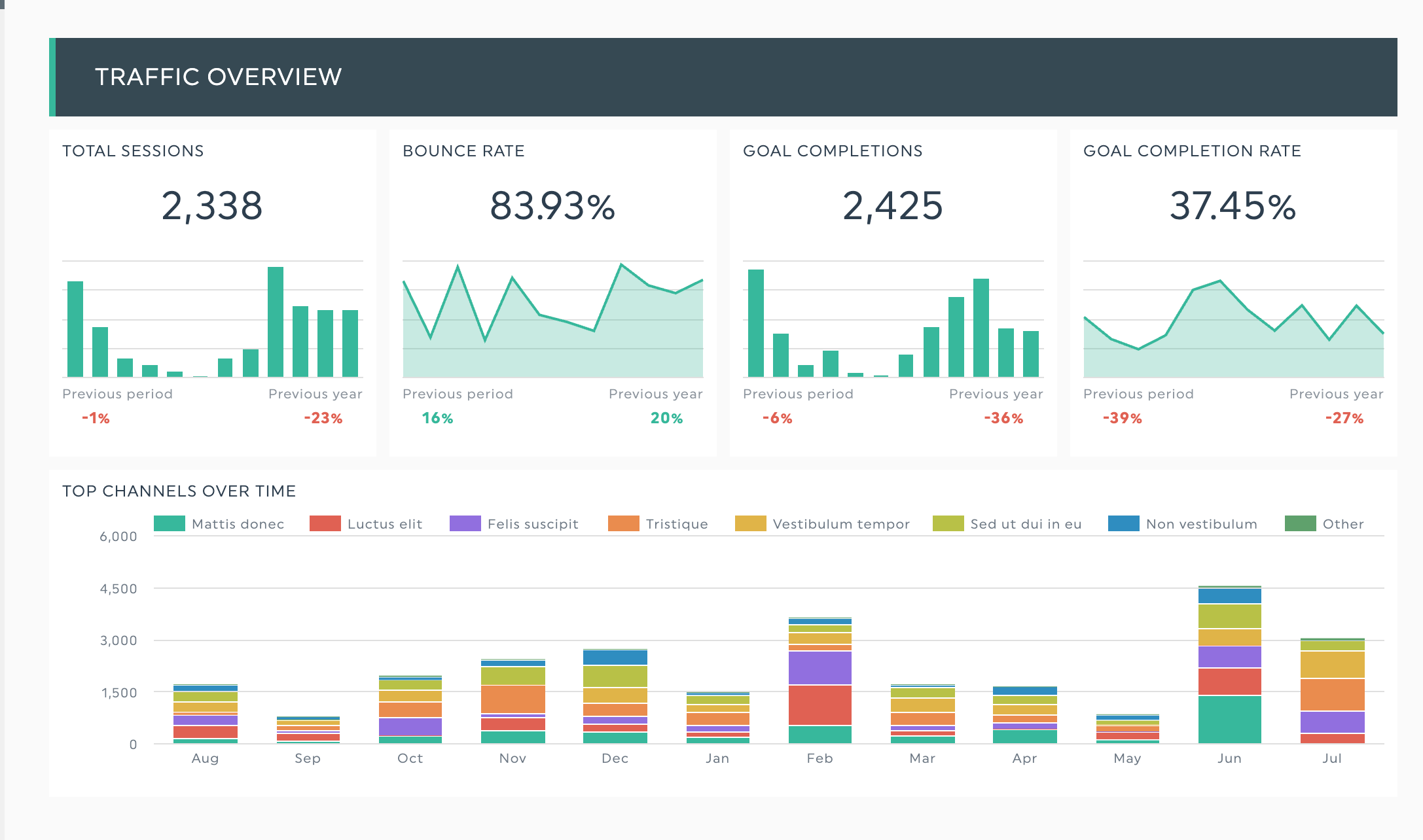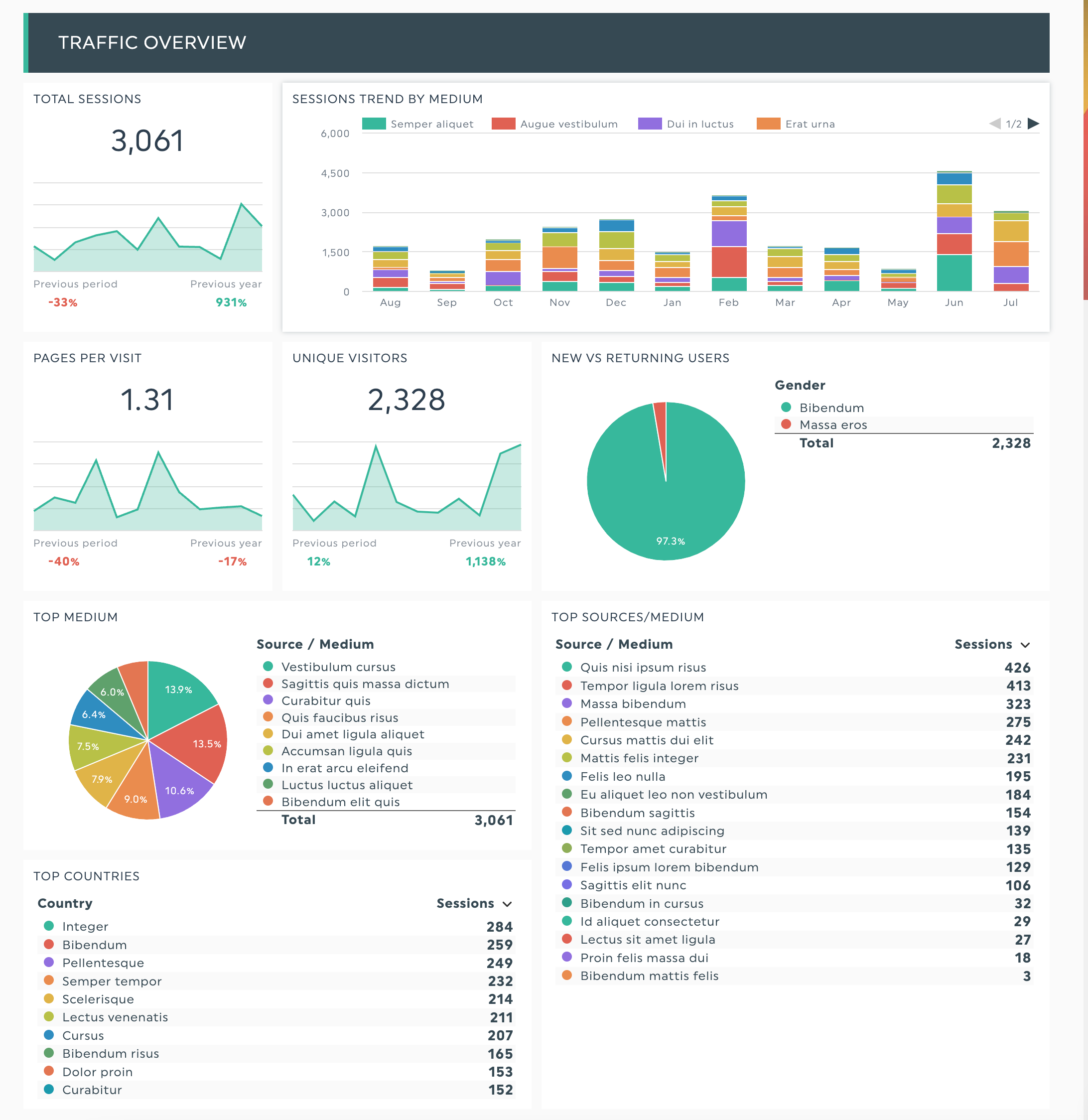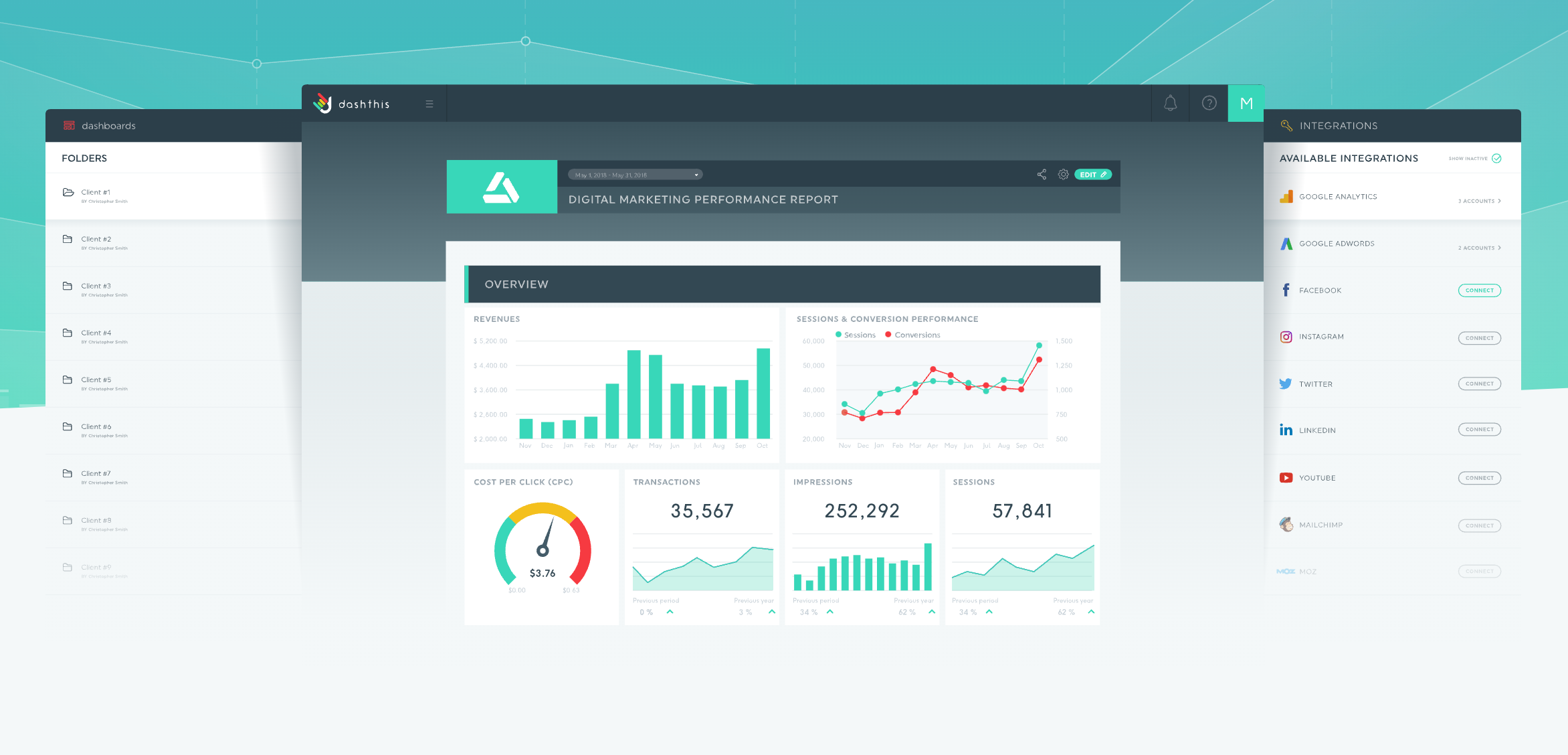10 Must-Track Content Marketing KPIs & Metrics in 2024

When running a content marketing strategy across social media, email, websites, and other digital marketing platforms, it can be challenging to understand if your content marketing efforts are helping your business. Too often, businesses produce content pieces hoping for new leads and website traffic but don't leverage the data available to truly understand if their audience is even consuming that content and if the outcomes are worth the effort.
This is where content marketing KPIs come into the picture. These metrics are an essential tool at the heart of any content marketing strategy, and in this article, we will review everything you need to know, including:
- What are content marketing KPIs?
- Why its important to track them
- Top KPIs to measure
- How to track them
What are content marketing KPIs?
Content marketing KPIs—or key performance indicators—are data points that reflect your content performance or content marketing campaign results. There are dozens of metrics that you can find within your SEO strategy or google analytics dashboard, and the data provided can help you understand if your piece of content or type of content has the effect you are looking for.
No single content marketing metric will say 'success' or 'failure.' Still, by reflecting on the right KPIs, you can build a story of your marketing campaign to understand who is engaging, what they like the most, what content isn't attractive to your viewers, and more.
Why it's important to track your content marketing KPIs
Tracking KPIs is the best way to measure your content marketing ROI to determine if your efforts lead to an increase in business or brand awareness. It is essential to track these metrics weekly or monthly to understand your website rankings, social media engagement, target audience, search engine performance, and more. This will help you increase the optimization of your strategies and continue to tweak and adjust your marketing to connect with your target audience and meet your content marketing goals.
Top quality content marketing KPIs to measure
Organic traffic
Organic traffic measures how many website visitors found your site through the search engine results page (SERPS). As a valuable content marketing metric, this KPI is a key indicator of the success of your SEO strategy and is an important content KPI to track regularly.
This metric emphasizes the importance of optimizing your landing page with different types of relevant keywords to bring in visitors and ensure that they engage with your content. This metric is important because it shows your website's potential to engage new audiences, compete with the market, and generate new leads without any effort.

Backlinks
Backlinks are another critical tenant of any solid SEO strategy. They are words throughout your website, whether on the main pages or in the blog, that link to other pages within your website and beyond. These referral links direct your web page to other reliable sources online, helping to build your website's domain authority (DA), telling the search engine that your website has credentials and a valuable standing with its audience.
A successful backlinking strategy can help lead generation because a boost in domain authority helps your site show up higher in the search results, increasing the chance that you will get new visitors. Establishing a successful backlinking strategy is essential to build your website's trustworthiness within the Google algorithm.

Social shares
Social shares represent the number of times your content was shared by its audience across social media platforms. This metric is essential in measuring the success of your content and can give you important insights into your content creation moving forward.
Looking at which pieces of content were shared the most, you can quickly learn what resonates with your audience, where there is room for growth, how you can gain additional audience members, and which elements of your brand message are most successful.

Click-through rate
The click-through rate (ctr) measures how many people clicked on and engaged with a hyperlink you posted on social media, your website, or an email marketing campaign. This is an important metric to measure when tracking audience engagement, for it helps you understand if your wording, posts, and references are helpful or engaging to viewers.
Adjusting the call to action (cta) can improve this metric, and different language uses can help encourage qualified leads to engage with the content you are posting. Without this metric, it is impossible to know if anyone is, for example, visiting your shop after they finish reading your blog post.

Bounce rate
The bounce rate represents the percentage of website visitors where the individual exited the page without clicking on any links on the site itself, including call-to-action links or other pages in the website menu. This metric can be measured individually by page or as a value for the website overall. This is an important KPI for measuring engagement, and it is key to keep the number as low as possible.
You don't want visitors exiting immediately upon visiting your website because you will never convert any customers. However, if the metric is too high, work on your website layout, load time, call-to-action phrasing, and more.

Average time on page
Average time on page measures how long visitors spend on your website and can be tracked either by individual page or as an overall website metric. Taking initiatives to create engaging content, an effective linking strategy, and strong calls to action can significantly influence how long a visitor will spend on your website.
Make sure your website users know all the value you have to add, whether it's inbound links to your podcast or webinar series. Track average time on the page to establish an understanding of what pulls visitors in and pushes them away.
Conversion rate
The conversion rate is one of the most essential KPI content marketing metrics. The conversion rate represents the proportion of visitors who performed the desired action. So, if you created a link to sign up for the email newsletter, subscribe to the podcast, follow on social media, or shop the sale, the number of visitors who followed through with this makes up the conversion rate.
This metric tells a story about your lead generation and optimization of your website pages and copywriting tactics, especially for eCommerce websites.

Scroll depth
It is one thing for a visitor to arrive at your page because it appears at the top of the search engine results. But, it is another thing for the visitor to find your website content engaging enough to scroll through your landing page and read everything your site offers.
Scroll depth is a metric that measures how far down on a page your visitors go, and can tell you a lot about where their interest falls off and how you can re-optimize your website to improve any low-performing areas.
Number of leads
The number of leads metric indicates how many interested prospects your website and business gain. It is often measured through an understanding of conversion and bounce rates and can be determined by analyzing several other KPIs in the toolkit.
This is an essential metric because, ultimately, your business is comprised of your leads, and you will see an increase in the bottom line by optimizing lead generation.
Pageviews
Pageviews are fundamental to track because they measure how many times a page was loaded in a browser. It is a solid way to get a baseline understanding of your website traffic but does leave out some nuances since it will count repeat opens of the same page by the same user or visitor. To overcome this, the metric 'unique pageviews' measures the number of opens, excluding repeats from the same user. This metric gives a sense of the effectiveness of your SEO strategy.

How to track your content marketing KPIs
Tracking these metrics across the web and social media platforms can seem challenging and overwhelming, making it difficult to get a complete picture of your content marketing strategy. With DashThis, it is easy to collect all of your data in one report through three easy steps.
- Connect your favorite marketing tools to our platform. We have integrations to incorporate data from over 30 popular platforms, including Google Analytics, Linkedin, Facebook, and more.
- Use our preset metrics widgets to select the KPIs you want to measure the most: conversion rate, page views, or bounce rate.
- Easily drag and drop our widgets into a customizable template so you can feed all of your data into one concise, easy-to-read sheet with charts and conclusive figures.

Ready to automate your reporting?
Read More
Don’t miss out!
Automate your reports!
Bring all your marketing data into one automated report.
Try dashthis for free

